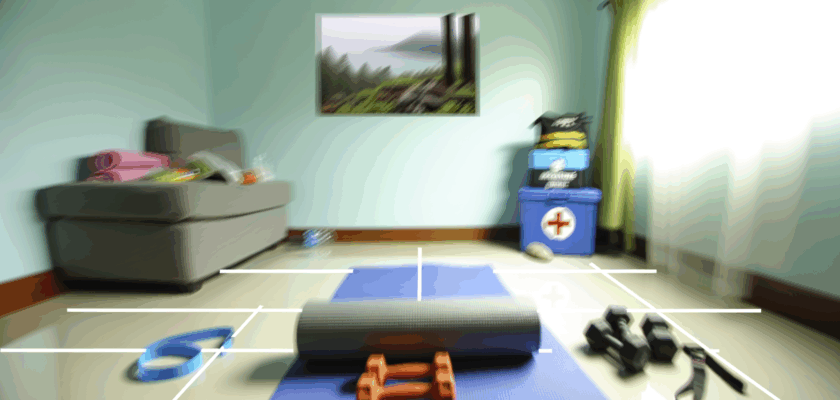With the rising popularity of home workouts, more people are embracing fitness routines within the comfort of their living spaces. While exercising at home offers convenience and flexibility, it also comes with the risk of injuries, especially without professional supervision or proper equipment. Understanding common workout injuries and knowing how to administer first aid can significantly reduce complications and promote faster recovery.
Common Injuries During Home Workouts and How to Spot Them
Home workouts often involve repetitive movements, bodyweight exercises, and makeshift equipment, which can lead to a range of injuries. One of the most frequent injuries is muscle strains, characterized by sudden sharp pain, muscle stiffness, or swelling after overstretching or overuse. These usually occur in the legs, back, or arms during exercises like squats, lunges, or push-ups.
Another common injury is joint sprains, especially in the wrists, ankles, and knees. Sprains happen when ligaments are stretched or torn due to improper form, sudden twisting, or landing awkwardly. Symptoms include swelling, bruising, limited mobility, and tenderness around the affected joint, often making movement painful.
In addition, bruises and cuts can arise from accidental bumps into furniture or dropping weights. While these injuries may appear minor, they can sometimes hide deeper tissue damage or infection risks if wounds are not cleaned properly. Recognizing these injuries early and assessing their severity is crucial to avoid worsening the condition.
Essential First-Aid Steps to Treat Home Workout Injuries
The initial approach to most workout injuries involves the R.I.C.E. method: Rest, Ice, Compression, and Elevation. Resting the injured area prevents further damage, while applying ice helps reduce swelling and numb pain. Compression with an elastic bandage can stabilize the injury and decrease inflammation, and elevating the limb above heart level promotes fluid drainage.
For muscle strains and sprains, gentle immobilization is important, but complete inactivity should be avoided for prolonged periods to prevent stiffness. Over-the-counter pain relievers may help alleviate discomfort, but it is essential to follow dosage instructions and consult a healthcare provider if pain persists or worsens.
When dealing with cuts or bruises, cleaning the wound thoroughly with soap and water reduces infection risks. Applying an antiseptic and covering it with a sterile dressing helps protect the injured area. If signs of infection such as increased redness, warmth, or pus appear, or if bruising is extensive, seeking medical attention is advised.
Injuries during home workouts are common but manageable with timely recognition and appropriate first aid. By being aware of the typical signs of strains, sprains, and minor wounds, individuals can take swift action to reduce pain and prevent complications. Incorporating safety measures and proper technique into home fitness routines not only minimizes injury risk but also supports long-term health and wellbeing.

